Korean Heritage Passport Tour
- Incheon International Airport PR Center (Traveler Center)
- Gaya Culture Route
- Gwandong Pungryu Era Route
- Baekje Antiquity Route
- Korean Temple Monasteries (Sansa) Route
- Korean Confucian Academy Route
- Prehistoric Landscape Route
- Mythic Landscape Route
- Folk Music Route
- Royalty Route
- Golden Era Route
Ganghwa, Gwangju, Gimpo, Seoul, Suwon, Hwaseong
- A historical tour of Korea across Seoul and the metropolitan area
Seoul, where people have been living since prehistoric times, was called Wiryeseong or Hanseong when it was the capital of Baekje, and called Hanyang when it was the capital of the Joseon Dynasty. The city, which has served as the capital of Korea since the late 14th century CE, is jam-packed with history, especially as it served as the center of Joseon's history. Seoul has five royal palaces, and naturally, each palace has its own stories to tell. These stories extend all the way to Suwon, Hwaseong, Gimpo, and Ganghwa, all of which have their own rich history and heritage. The roads from Seoul to the metropolitan area connect the inside and outside of what used to be the city walls of Seoul. Follow these roads, and you will learn about the dignity, splendid culture, glory, and downfall of the royal families of Korea, and ultimately, the history of the Korean people.
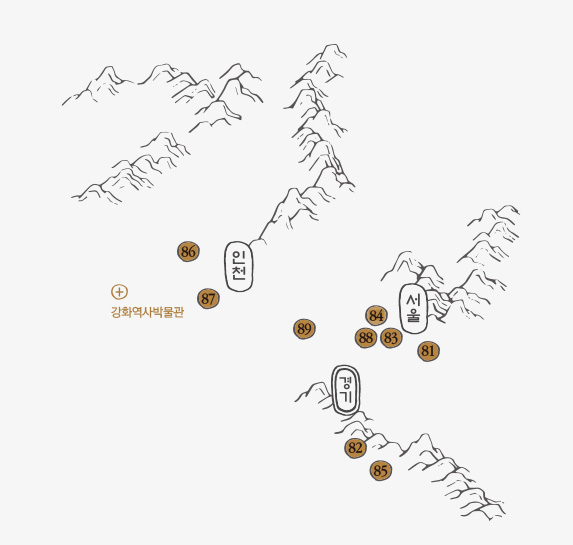
The convenient public transportation system is one of Seoul's strengths. Buses and subways connect every corner of the city and also the nearby metropolitan area, which means you can enjoy any trip without much difficulty. Inter-city buses run every 15~20 minutes on weekdays and 30~40 minutes on weekends, so make sure to check the timetable of whichever bus you want to take in advance.
Flavors of Ganghwa, Gwangju, Gimpo, Seoul, Suwon, and Hwaseong might just leave a lasting memory
-
Ganghwa Salted Shrimps
Ganghwa is the largest producer of the thin-skinned and nutrient-rich salted shrimp in Korea. Every year, during the Gimjang season (time when families make Kimchi for the winter), the ports in Ganghwa become packed with people from all over the country buying salted shrimp for their Kimchi. A popular dish using salted shrimps as an ingredient is Jeotguk Galbi, which is a local specialty of Ganghwa that has been handed down since the Goryeo Dynasty.
-
Ganghwa Ginseng
Ginseng is one of the best-known medicinal plants in the world that offers outstanding efficacies. Ganghwado Island began cultivating and harvesting Ginseng during the Goryeo Dynasty, but the Ginseng industry welcomed its heyday after the Korean War. Ganghwa Ginseng, which carries on the legacy of Goryeo Ginseng, is famous for its firm and hard flesh. In particular, the 6-year-old Ginseng is renowned for its quality.
-
Janggukbap
Seoul is known for its sophisticated royal and aristocratic cuisine thanks to the fact that ingredients and recipes have made their way to the city over the centuries. In particular, the Tangban (Gukbap) culture in which rice is added to soup has developed its own distinct style. Tangban culture gave rise to a dish called Janggukbap. Janggukbap is one of Seoul's signature dishes, where rice is put in a clay pot, the soup is poured, then the entire dish is topped off with meat, Sanjeok pieces, seasoned bracken, and seasoned bean sprouts.
-
Hwaseong Grapes
With nutrient-rich soil and an abundance of sunlight, Hwaseong is the perfect place to grow grapes. Also, Hwaseong grapes are particularly large and sweet thanks to the sea breeze that blows in from the Yellow Sea. The Hwaseong Songsan Grape Festival, held every September, is a popular event for those looking to try some sweet and sour grapes freshly harvested from nearby orchards.
-
Seolleongtang
Seoul has a rich history of soups. That is why it has plenty of soup restaurants with a long tradition. Seolleongtang, with its rich and clear broth, is made by boiling meat from the head, leg bones, knee cartilage, intestines, and other bones from cows.
-
Gimpo Golden Rice
Gimpo, with its fertile plains, has been one of the best granaries for the Korean people since ancient times. The high-quality rice produced here was so delicious that it was often served to the King of Joseon. Gimpo Golden Rice, which boasts a long history and tradition, is instantly recognizable with its clear, transparent, and shiny grains.
-
Suwon Galbi
Suwon's beef market has been famous nationwide since the Joseon Dynasty. Since cattle were collected and traded in Suwon, it was easy to find high-quality beef ribs, which, in fact, made the entire city a byword for ribs and dishes made using ribs. Suwon Galbi first marinated in seasoning and then grilled is known for its tender and juicy meat.
-
Tongdak
Tongdak in Korea often means roasted or fried chicken that has been plucked and gutted. Near Suwon's Paldalmun Gate is “Tongdak Street” where the whole street is filled with restaurants and shops selling whole chicken. If you are looking for something a little more unique than the traditional Tongdak, you can try the fried chicken, seasoned chicken, and the Suwon Wanggalbi chicken, which became an overnight sensation when it was first showcased in a movie a few years ago.
Korean Heritage festivals in Ganghwa, Gwangju, Gimpo, Seoul, Suwon, and Hwaseong
-
2021 World Heritage Festival
The World Heritage Festival is a major festival that gives visitors an opportunity to enjoy a variety of UNESCO World Heritage resources. Construction Records of Hwaseong Fortress Still Lives.
For more details, please check the festival’s official website below.
Website www.worldheritage.modoo.at
-
Royal Culture Festival
The Royal Culture Festival gives you an opportunity to enjoy the royal palaces in Seoul in a way you never have. Online content for the Festival is available for you to consume year-round. The Festival hosts various cultural and art performances, exhibitions, immersive programs, and rituals inspired by the significance and history of Gyeongbokgung Palace, Changdeokgung Palace, Deoksugung Palace, Changgyeonggung Palace, Gyeonghuigung Palace, Jongmyo Shrine, and Sajikdan.
For more details, please check the festival’s official website below.
Website www.chf.or.kr/fest
-
Jongmyo Daeje
Jongmyo Daeje is the national shrine of the Joseon Dynasty, and it also refers to the ritual held in Jongmyo, a UNESCO World Heritage Site, to celebrate the spirits of past kings and queens of the Joseon Dynasty. Jongmyo Daeje (Important Intangible Korean Heritage no. 56) is a national ritual ceremony held in Jongmyo Shrine, which is a UNESCO World Heritage Site, and is a rare traditional ceremony that lets people enjoy and appreciate both tangible and intangible UNESCO World Heritages.
For more details, please check the festival’s official website below.
Website www.chf.or.kr/chf
-
King Jeongjo HYO Cultural Festival
The 2021 King Jeongjo HYO Cultural Festival in Hwaseong-si will tell the heart-warming story of King Jeongjo's filial piety with a variety of exhibitions, immersive programs, and performances in Yungleung, which is known for the wonderful aroma of its pine trees.
For more details, please check the festival’s official website below.
Website www.hs-jeongjo.com
-
Suwon Hwaseong Cultural Festival
Suwon Hwaseong Cultural Festival is a culture and tourism festival with a rich history hosted every year at the Suwon Hwaseong Fortress. The Fortress, a symbol of King Jeongjo’s filial piety to his parents and aspirations to build a prosperous nation, is the perfect place to learn, enjoy, and experience stories about the Suwon Hwaseong Fortress. The Festival is also a cultural event where you can enjoy various cultural and artistic content in historical places such as Hwaseong Fortress and Yongyeon.
For more details, please check the festival’s official website below.
Website www.swcf.or.kr/shcf/
-
Suwon Korean Heritage Night
Suwon Korean Heritage Night, a portal to the past - Suwon Korean Heritage Night is a festival where you can learn about the history and culture of Suwon and its connection to the royal family of Joseon at the Suwon Hwaseong Fortress and Hwaseong Haenggung. In particular, the Fortress, which is often hailed as the pinnacle of fortress architecture in Korea, lights up with beautiful media art every night. The Festival also offers eight programs that have some connection to the history behind certain parts of the Fortress.
For more details, please check the festival’s official website below.
Website www.swcf.or.kr
-
Moonlight Tour at Changdeokgung Palace
Moonlight Tour at Changdeokgung Palace, which marks its 12th anniversary this year, is one of the best-known cultural events in Korea hosted at Changdeokgung Palace, a UNESCO World Heritage Site. It is a bona fide culture and art festival where you can walk along the beautiful paths of Changdeokgung Palace illuminated by traditional lanterns and learn about tales you may have never heard of. The Moonlight Tour at Changdeokgung Palace gives you a chance to enjoy Huwon Garden and immerse yourself in the classical beauty and ambiance created by Changdeokgung Palace.
For more details, please check the festival’s official website below.
Website www.chf.or.kr
-
Starlight Tour at Gyeongbokgung Palace
The Starlight Tour at Gyeongbokgung Palace gives you a chance to enjoy traditional Korean music and royal cuisine that used to be served only to the king at Gyeongbokgung Palace’s Sojubang. The guided tour, led by an expert cultural commentator, will also give you more insight into the history and culture of Gyeongbokgung Palace.
For more details, please check the festival’s official website below.
Website www.chf.or.kr
-
Gungon Project
Gungon Project is an “untact” cultural art program that allows you to experience the royal palaces of Korea anytime, anywhere.
For more details, please check the festival’s official website below.
Website www.goongon2021.modoo.at
-
Haman Aragaya Cultural Festival
Canceled due to COVID-19 in 2021
-
Gimhae Korean Heritage Night
Canceled due to COVID-19 in 2021
-
Gimhae Queen Heo Sinhaenggil Festival
Canceled due to COVID-19 in 2021
Course #1
- Namhansanseong Fortress
- Hwaseong Fortress, Suwon
- Jongmyo Shrine
- Changdeokgung Palace
- Yungneung and Geolleung Royal Tombs, Hwaseong
Course #2
- Dolmen Sites, Ganghwa
- Jeondeungsa Temple, Ganghwa
- Gyeongbokgung Palace
- Jangneung Royal Tomb, Gimpo
- Jongmyo Shrine
Jeondeungsa Temple in Ganghwa, a temple that has protected the island for 1,600 years
-
Address
37-41, Jeondeungsa-ro, Ganghwa-gun,
Incheon -
Inquiries
032-937-0125
-
Opening hours
Summer: 08:00 ~ 18:30
Winter: 08:30 ~ 18:00 -
Stamp
In front of the Ticket Office near the south gate of Jeondeungsa Temple
-
Admission
Adults KRW 4,000 / Teenagers KRW 3,000 / Children KRW 1,500
-
Website
-
Directions
Get off at Dangsan Station on subway line no. 2 → Take bus no. 7000 at the Dangsan station bus stop → Get off at the Solteo Village entrance bus stop, then transfer to bus no. 70 → Get off at Jeondeungsa Temple Nammun Gate bus stop → Walk for 13 minutes
In Ganghwado, you will find a couple of very special places with direct ties to Dangun. One is Manisan Mountain, and the other is Ganghwa Samrangseong Fortress. Samrangseong Fortress, which is said to have been built by the three sons of Dangun, is also called Jeongjoksanseong Fortress. It served as a stronghold protecting the outskirts of Gaegyeong, the capital of Goryeo, and Hanyang, the capital of Joseon. Jeondeungsa Temple, located inside the walls of Samrangseong Fortress, is the best-known temple of Ganghwado, and records say that it was built by Ado Hwasang in 381 CE (11th year of King Sosurim). Originally, the Temple was named Jinjongsa. However, during the Goryeo Dynasty, it was renamed Jeondeungsa, meaning “to deliver Buddhist enlightenment.” Unfortunately, the Temple did suffer several fires. At one point in its history, Jeondeungsa was completely burned to the ground, but it was fully restored in 1625 CE (3rd year of King Injo). Although the Joseon Dynasty was largely anti-Buddhism, Jeondeungsa Temple was an exception - it was protected by the royal family. Inside Jeongjoksanseong Fortress, there used to be an archive that kept the Annals of the Joseon Dynasty (natural treasure and UNESCO Memory of the World). In other words, Jeondeungsa Temple functioned as a guardian temple that protected the Annals of the Joseon Dynasty. In 1871 CE (8th year of King Gojong), which was the final year of the Joseon Dynasty, a warehouse was built to store weapons and food, and the following year, 50 soldiers were stationed to protect the Temple. Jeondeungsa Temple, which boasts a long history dating back to the Three Kingdoms period, has a number of valuable cultural assets. Examples include the Daeungjeon Hall (treasure), which is known for its elegant curves and splendid decorations, the Jeondeungsa Jeonjong Bell (treasure), and the Wooden Seated Sakyamuni Buddha Triad, famous for its excellent craftsmanship. To the west of Jeondeungsa Temple is the Incheon Metropolitan City Monument for the Jeongjoksansago Site, where the Annals of the Joseon Dynasty were kept.
Samrangseong Fortress in Ganghwado - According to legend, the three sons of Dangun built the Fortress, which is why it was named Samrangseong. In 1660 CE (1st year of King Hyeonjong), the Annals of the Joseon Dynasty, which had been stored at an archive on Manisan Mountain, were moved to Jeongjoksansasa Temple inside the Fortress, and Seonwonbogak was built to safe keep the documents. Both, however, have been lost to history, and only Jeondeungsa Temple remains.
Annals of the Joseon Dynasty at the Jeongjoksansago Archives
The Annals of the Joseon Dynasty are a series of records that spans a period of 472 years (1392~1863 CE) from King Taejo to King Cheoljong (25th monarch of Joseon). Historical events were written and arranged in chronological order. The Jeongjoksansago Archive copy stored in the Gyujanggak is a vast collection with 1,187 books.
Daeungjeon Hall of Jeondeungsa Temple
The Daeungjeon Hall, which enshrines the Sakyamuni Buddha Triad, is said to have been built in 1621 CE (13th year of Gwanghaegun). On the upper part of the pillars propping up the four corners, a human figure has been carved in. Legend has it that a naked figure was sculpted into the pillars to warn an old lady of her wrongdoing, who stole from the carpenter who was tasked with building the Temple.
Cheoljong Bell of Jeondeungsa Temple
The Cheoljong Bell at Jeondeungsa Temple is a steel bell brought from China during the final years of the Japanese colonial rule of Korea. When Korea won its independence, it was discovered at the military base in Bupyeong and moved to Jeondeungsa Temple, where it has been kept ever since. The bell has the typical features of a Buddhist bell made in China, and has clear differences from Korean bells.
Wooden Seated Sakyamuni Buddha Triad of Jeondeungsa Temple
This Buddha Triad was made in 1623 CE by Suyeon, who served the Buddhist community in the Jeollabuk-do and Chungcheongnam-do region during the first half of the 17th century. It is a manifestation of the Buddha Triad, which ware popular nationwide in the late Joseon Dynasty period.
Ganghwa Jeongjoksansago Site is located to the west of Jeondeungsa Temple inside Jeongjoksanseong Fortress. Inside the Fortress, Jeondeungsa Temple had protected the Sago archives as its guardian temple. It kept the Annals of the Joseon Dynasty and other records safe until they were moved in 1910 when the Academic Affairs Division of the Japanese Government-General of Korea was created.

Provided by Jeondeungsa Temple
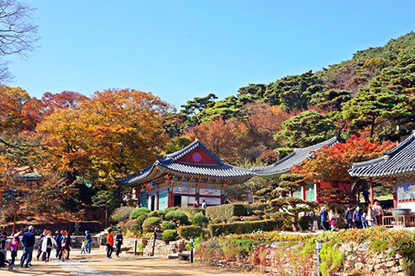
Provided by Jeondeungsa Temple

Provided by Jeondeungsa Temple









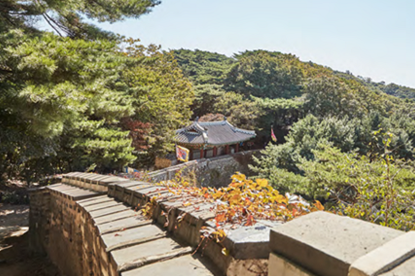
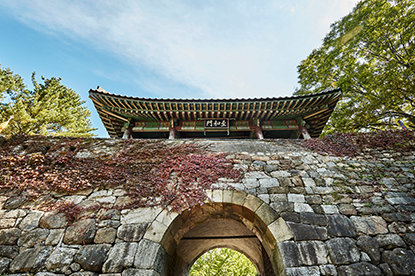
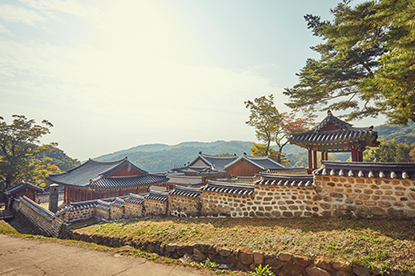


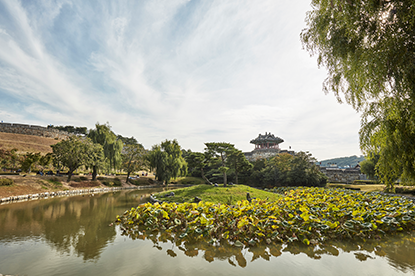
 Full Pass Ticket
Full Pass Ticket
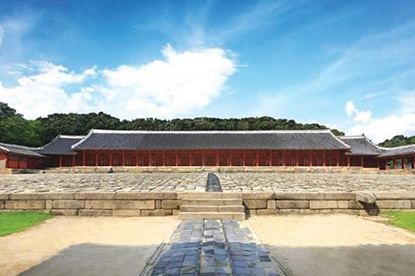
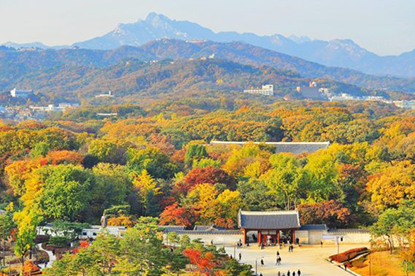
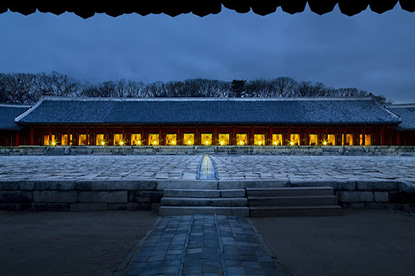
 Jongmyo Daeje
Jongmyo Daeje
 Jongmyo Jeryeak Night Performance
Jongmyo Jeryeak Night Performance
 Jongmyo Myohyeonrye
Jongmyo Myohyeonrye

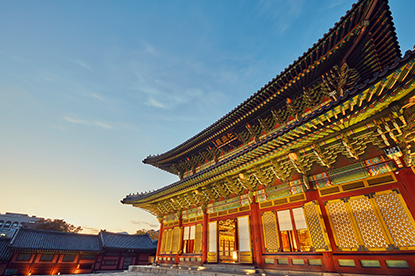
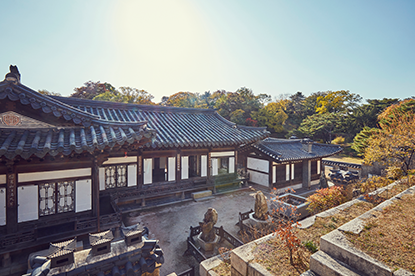
 Reservations to visit Huwon Garden
Reservations to visit Huwon Garden


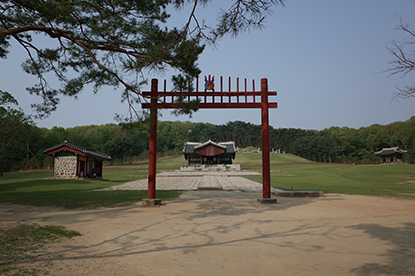
 King Jeongjo's Trip to the Royal Tomb
King Jeongjo's Trip to the Royal Tomb


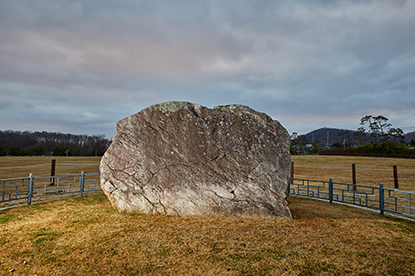

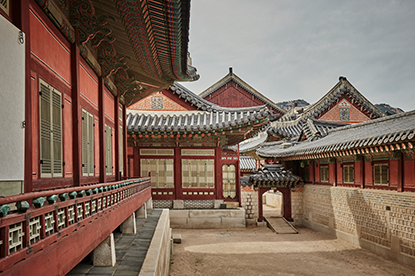
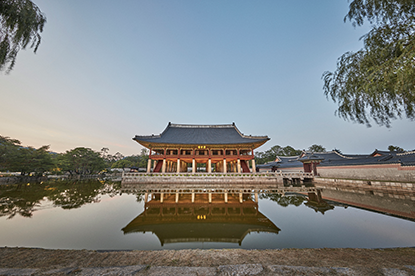
 Gyeongbokgung Palace Changing of the Guard Ceremony
Gyeongbokgung Palace Changing of the Guard Ceremony
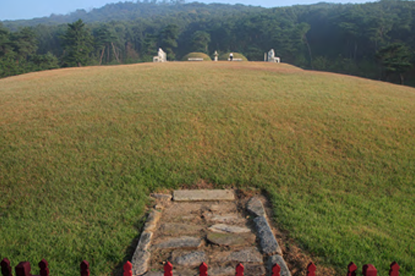
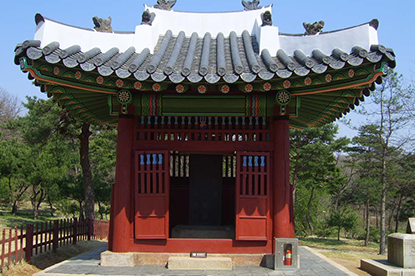

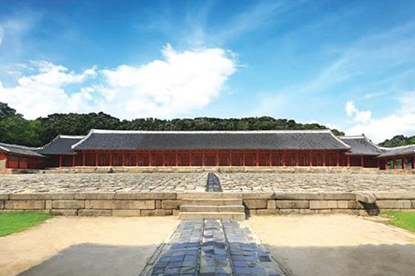
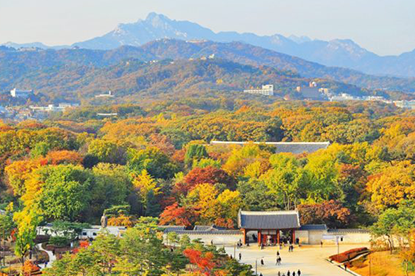

 Jongmyo Daeje
Jongmyo Daeje
 Jongmyo Jeryeak Night Performance
Jongmyo Jeryeak Night Performance
 Jongmyo Myohyeonrye
Jongmyo Myohyeonrye

